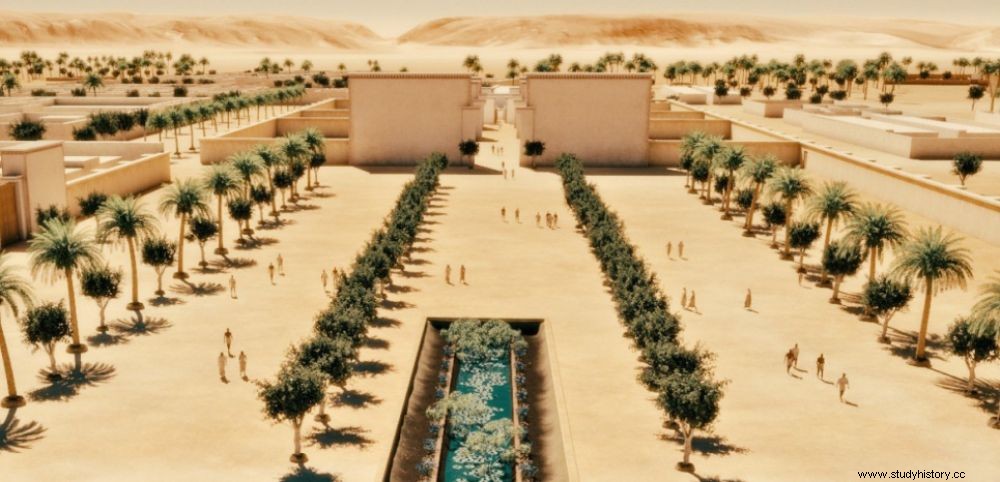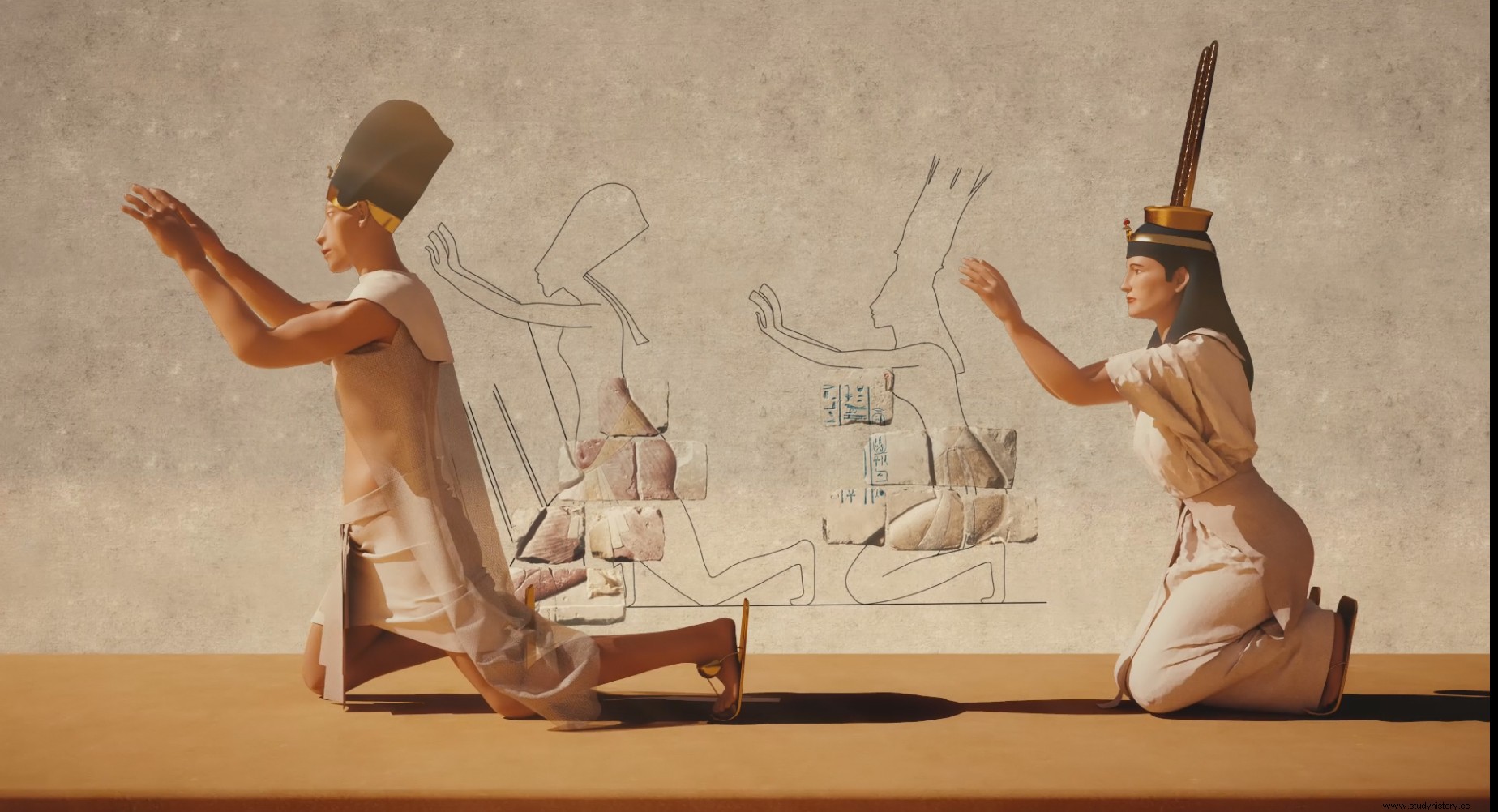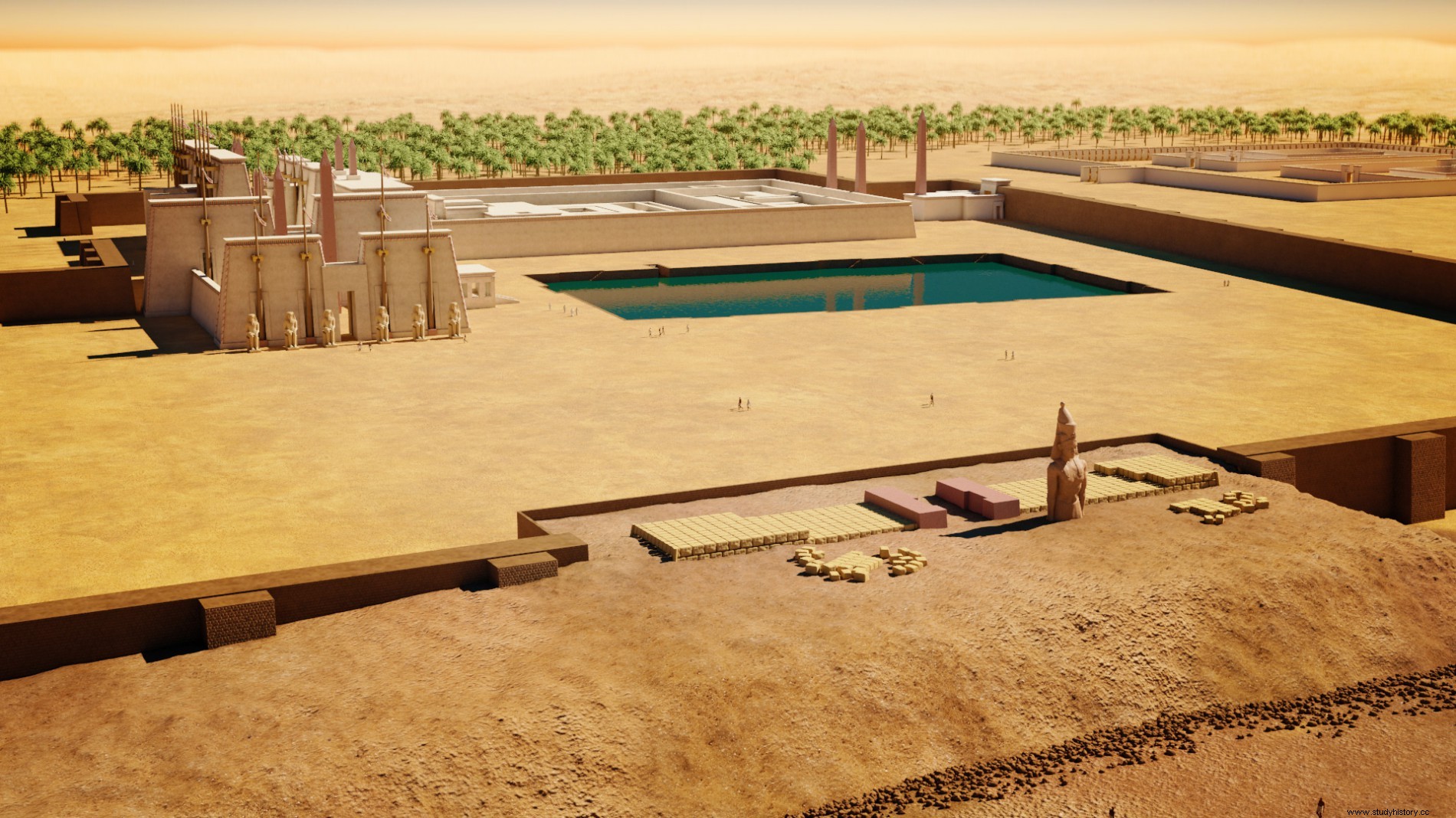 The small temple of Aten at Tell el-Amarna, reconstructed in 3D.
The small temple of Aten at Tell el-Amarna, reconstructed in 3D. EXHIBITION. 3D technologies used to better understand a religious revolution in ancient Egypt? This is the successful bet of the Archéovision laboratory with Amarna 3D, the city built by the famous pharaoh Akhenaten. An exhibition visible until April 29, 2016, in the hall of the Aquitaine Regional Council, in Bordeaux. Amenhotep IV, the New Kingdom pharaoh better known as Akhenaten, is famous for the cataclysm he caused in Egypt by imposing the unique cult of Aten, the solar disk, in place of that of Amun. In year 5 of his reign, he then had a new city built at Tell el-Amarna, in the middle of the desert, 300 km from the Theban capital. But barely ten years after their creation, on the death of the sovereign, temples, palaces and administrative buildings emerged from the sand and were completely abandoned. Only a few stones remained, without the researchers really understanding their layout and shape.

Senta scene:3D reconstruction of Akhenaten and Nefertiti, the royal cup, prostrating themselves under the rays of the Aten sun. © Archéovision - Archéotransfer
This is now done thanks to the Archéovision laboratory, a CNRS unit backed by the universities of Bordeaux and Bordeaux Montaigne. "The idea is to make the public understand, through 3D technology, what was the genesis of the profound upheaval that Egyptian society experienced under the reign of this monotheistic pharaoh “, explains Robert Vergnieux, former director of the Archéovision laboratory.

By working between the site of Karnak - where the sovereign initially resided (see photo opposite) - and that of Amarna, the Egyptologists were thus able to understand the new "architectural standards that he imposed on the buildings of his new capital. It is therefore to reconstruct a real puzzle that Archéovision researchers have engaged in from data accumulated during archaeological excavations carried out since the end of the 19th century. "The city of Amarna was not reoccupied after its destruction, and despite its dismantling, and the demolition of its limestone walls by the lime-burners who came to make lime from antiquity, the complete plan of Amarna is still visible on the ground in Google Earth! », explains Robert Vergnieux.
The archaeologists thus had the foundations of the buildings, the spatial organization of the city and its limits as well as certain architectural representations found reproduced on the walls of the royal tombs which had been dug there. This information was supplemented by the innumerable scenes and decorations adorning the sandstone walls of the temples of Karnak.
Tell el-Amarna 3D:Excerpt from the film on Amarna (Aton-Num Exhibition) © Archéovision - Archéotransfert on Vimeo.
Result:a video allowing contemporary viewers to walk between temples and gardens. "All the novelties of Amarna were thought in Karnak, where Akhenaten changed the balance of Egyptian society with a new device in his relationship to the di wine”, continues the Egyptologist. So, for example, the temples of Amarna had no roof to be directly flooded by the divine rays of the Aten and thus facilitate dialogue with the solar disc. On the death of Akhenaten, his son Tutankhamun, who had become king, left his father's city to return to Thebes, the ancient capital.
